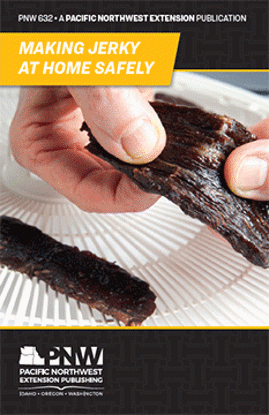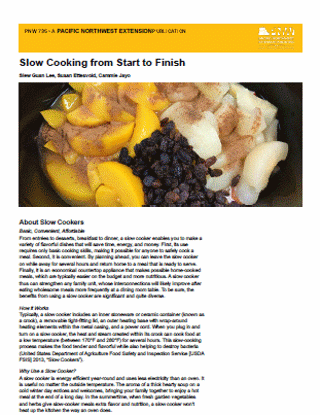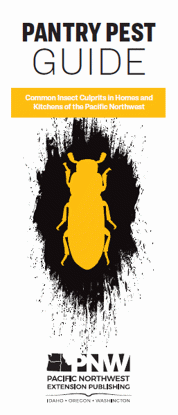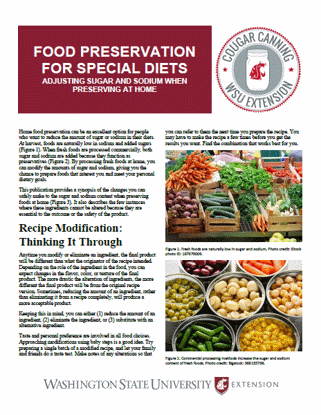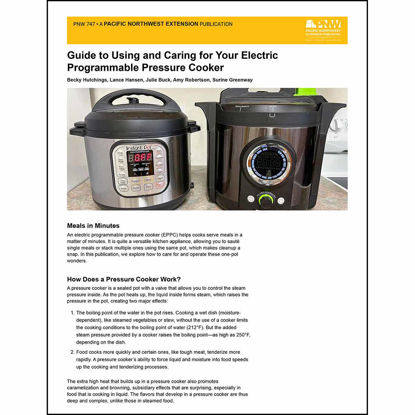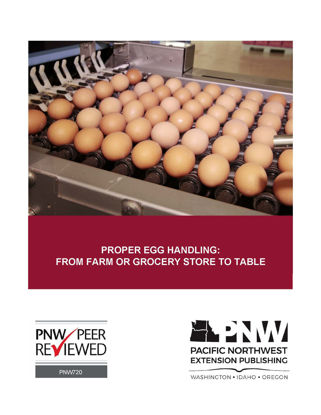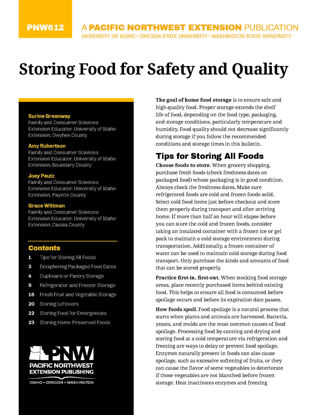You have no items in your shopping cart.
Consumer Food Safety; Canning; Freezing
Consumer Food Safety
Making Jerky at Home Safely
Jerky is a nutritious, nonperishable, and lightweight protein source, but making it requires a lot of care. If done incorrectly, you can poison yourself or others. This publication shows you how to make this delicious treat safely at home, including the proper use of ovens or dehydrators and that of thermometers; how to accurately judge doneness; the preparation techniques needed when dehydrating different types of protein, including fish; and how to condition, package, and store your batches safely after they’re done. Illustrated, with a few recipes.
$0.00
Slow Cooking from Start to Finish
A slow cooker produces a variety of delicious and healthy dishes that saves time, energy, and money. Learn about this versatile kitchen appliance—how to operate it; selecting one that suits your needs; cooking safely with it; how to clean it; helpful tips, like handling leftovers; plus eight yummy recipes to get you started. Its slow but steady approach will soon fill your house with the irresistible aroma of a home-cooked meal.
$0.00
Pantry Pest Guide: Common Insect Culprits in Homes and Kitchens of the Pacific Northwest
The purpose of this guide is to help residents in the Pacific Northwest to identify common insect pests that occur in pantries and kitchens. This guide is not meant to be all inclusive, but is meant to cover the most common-occurring species you may encounter.
$0.00
Fruit Pie Fillings for Home Canning
Imagine using home-canned fruits in pies, pastries, parfaits, cobblers, crisps, or even as a topping for pancakes. Recipes for home-canned fruits found here!
$0.00
Food Preservation for Special Diets: Adjusting Sugar and Sodium When Preserving at Home
Looking to cut back on sugar and salt? Love canning foods at home? Then this publication is meant for you!
$0.00
There Are Dangers Lurking in Your Flour
Many don’t realize that raw flour can transmit foodborne illnesses. This pub outlines the risks of flour-based crafts and steps you can take to keep people safe.
$0.00
Guide to Using and Caring for Your Electric Programmable Pressure Cooker
An electric programmable pressure cooker (EPPC) helps you to serve meals in a matter of minutes. Learn how to operate and take care of these versatile, one-pot wonders in this wide-ranging PNW publication. Along with providing the basics about the appliance, it offers other helpful information, including safety issues, various cooking methods, conversion tables, cleaning tips, and more.
Authors: Becky Hutchings, Julie Buck, Surine Greenway, Lance Hansen, Amy Robertson
$0.00
Proper Egg Handling: From Farm or Grocery Store to Table
From the chicken to the table, this pub provides an easy-to-follow overview for those handling, storing, or consuming eggs.
$0.00
Storing Food for Safety and Quality
Proper food storage ensures that the food you bring home remains safe to eat and retains its high quality. This 24-page PNW teaches you all the basics about home storage of food, including pantry staples, meat, vegetables, fruit, leftovers, home-preserved food and food stored for emergencies. Detailed tables conveniently compile a list of storage times and optimal storage conditions for a wide variety of food. Guided by the tips and information provided, you’ll be able to update your pantry more safely and have a better shot at keeping it that way.
$0.00

